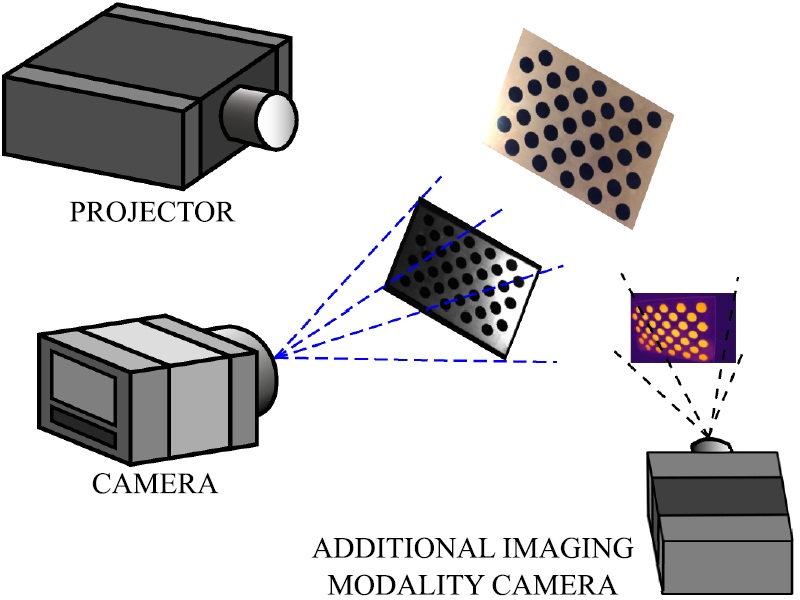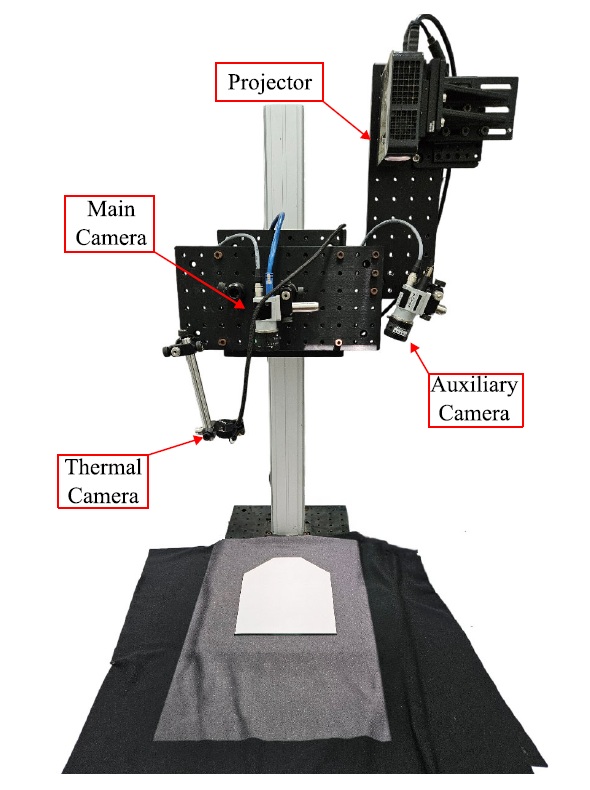
| Citation | Eberto Benjumea, Raul Vargas, Fernando Quintero, Rigoberto Juarez-Salazar, and Andres G. Marrugo, “Calibration of multimodal 3D structured-light systems using digital features” Applied Optics, Vol. 64, Issue 25, pp. 7333-7343 (2025). DOI: https://doi.org/10.1364/AO.569536 |
| Links | Full Article BibTeX More Papers |

What is it about?
Fringe projection systems have become important tools for 3D object imaging. Conventionally, cameras and projectors operating within the visible spectrum are utilized. Thus, the 3D geometry of the reconstructed object and its surface color are recovered. However, there are applications where other electromagnetic ranges are helpful, such as the infrared spectrum, which indicates the temperature of the scanned object. The temperature maps are particularly useful in medical applications; for example, where the diagnosis of skin tissues is not only supplemented by the shape and color of the lesion, but also by its temperature gradients.
Why is it important?
Calibrating systems with devices operating in different spectral ranges is challenging because classical calibration targets are not visible across all spectral ranges. In this paper, an auxiliary visible camera is introduced to apply the digital feature approach. In this manner, printing physical features on the target is not required.
Perspectives
Fringe projection techniques are evolving into multimodal systems to reconstruct 3D objects and their surface features across several electromagnetic ranges. The proposed approach contributes to providing a method for practical calibration of these multimodal 3D imaging systems.